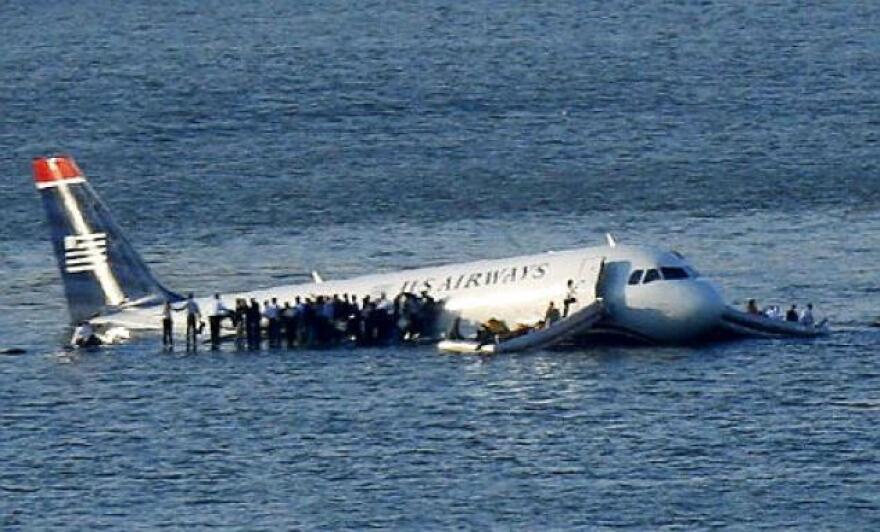- 15th Day of 2013 / 350 Remaining
- 64 Days Until The First Day of Spring
- Sunrise:7:23
- Sunset:5:15
- 9 Hours 52 Minutes of Daylight
- Moon Rise:6:45am
- Moon Set: 5:16pm
- Full Moon @ 8:35pm
- Full Wolf Moon
- Full Old Moon
January is the month of the Full Wolf Moon. It appeared when wolves howled in hunger outside the villages. It is also known as the Old Moon. To some Native American tribes, this was the Snow Moon, but most applied that name to the next full Moon, in February.
- Tides
- High:9:38am/11:35pm
- Low:3:55am/4:40pm
- Rainfall
- This Year:2.12
- Last Year:13.36
- Average Year to Date:11.31
- Holidays
- Humanitarian Day
- National Strawberry Ice Cream Day
- National Soup Day-United Kingdom
- John Chilembwe Day-Malawi
- On This Day In …
- 1777 --- Having recognized the need for their territory to assert its independence from both Britain and New York and remove themselves from the war they were waging against each other, a convention of future Vermonters assembles in Westminster and declares independence from the crown of Great Britain and the colony of New York on this day in 1777. The convention's delegates included Vermont's future governor, Thomas Chittenden, and Ira Allen, who would become known as the "father" of the University of Vermont. Delegates first named the independent state New Connecticut and, in June 1777, finally settled on the name Vermont, an imperfect translation of the French for green mountain. One month later, on July 2, 1777, a convention of 72 delegates met in Windsor, Vermont, to adopt the state's new—and revolutionary—constitution; it was formally adopted on July 8, 1777. Vermont's constitution was not only the first written national constitution drafted in North America, but also the first to prohibit slavery and to give all adult males, not just property owners, the right to vote.
- 1797 --- John Hetherington, a London haberdasher, created the top hat. A large crowd gathered to see this new hat, and he was charged with disturbing the peace (charges later dropped). The hat was an immediate success.

- 1831 --- Victor Hugo finishes writing Notre Dame de Paris, also known as The Hunchback of Notre Dame. Distracted by other projects, Hugo had continually postponed his deadlines for delivering the book to his publishers, but once he sat down to write it, he completed the novel in only four months.
- 1844 --- The University of Notre Dame received its charter from the state of Indiana.
- 1870 --- The first recorded use of a donkey to represent the Democratic Party appears in Harper's Weekly. Drawn by political illustrator Thomas Nast, the cartoon is entitled "A Live Jackass Kicking a Dead Lion." The jackass (donkey) is tagged "CopperheadPapers," referring to the Democrat-dominated newspapers of the South, and the dead lion represents the late Edwin McMasters Stanton, President Abraham Lincoln's secretary of war during the final three years of the Civil War. In the background is an eagle perched on a rock, representing the postwar federal domination in the South, and in the far background is the U.S. Capitol.

- 1892 --- YMCA Canada’s Y Triangle magazine published the story of a new game. James Naismith, a teacher at the YMCA International Training School in Massachusetts (later named Springfield College), had invented the game of basketball on December 21, 1891. Naismith attached peach baskets to the lower rail of a balcony, one at either end of the gym. There were eighteen men in Naismith’s class and he promised them that if this game proved to be a failure he would not try any more experiments on them. They went over the rules, divided the group into two teams of nine players each and tossed up the first basketball in history.
- 1899 --- Edwin Markham’s poem, The Man with a Hoe, was published for the first time. The California school teacher’s work was published by the San Francisco Examiner.
- 1913 --- The first telephone line between Berlin and New York was inaugurated.
- 1919 --- The Great Molasses Flood, as fiery hot molasses floods the streets of Boston killing 21 people and injuring scores of others. The molasses burst from a huge tank at the United States IndustrialAlcohol Company building in the heart of the city. The United States Industrial Alcohol building was located on Commercial Street near North End Park in Boston. It was close to lunch time on January 15 and Boston was experiencing some unseasonably warm weather as workers were loading freight-train cars within the large building. Next to the workers was a 58-foot-high tank filled with 2.5 million gallons of crude molasses. Suddenly, the bolts holding the bottom of the tank exploded, shooting out like bullets, and the hot molasses rushed out. An eight-foot-high wave of molasses swept away the freight cars and caved in the building's doors and windows. The few workers in the building's cellar had no chance as the liquid poured down and overwhelmed them. The huge quantity of molasses then
 flowed into the street outside. It literally knocked over the local firehouse and then pushed over the support beams for the elevated train line. The hot and sticky substance then drowned and burned five workers at the Public Works Department. In all, 21 people and dozens of horses were killed in the flood. It took weeks to clean the molasses from the streets of Boston.
flowed into the street outside. It literally knocked over the local firehouse and then pushed over the support beams for the elevated train line. The hot and sticky substance then drowned and burned five workers at the Public Works Department. In all, 21 people and dozens of horses were killed in the flood. It took weeks to clean the molasses from the streets of Boston.
- 1936 --- The first, all glass, windowless building was completed in Toledo, OH. The building was the new home of the Owens-Illinois Glass Company Laboratory.
- 1943 --- The world’s largest office building was completed, just outside of Washington, DC, in Arlington, VA. The massive structure covers 34 acres of land and has 17 miles of corridors, plus, a whole lot of secret places that we’ll never know about. Why? Because, it’s the Pentagon, the headquarters of the United States military industrial complex.

- 1958 --- The song 'Tequila' by the Champs was released.
- 1964 --- Vee Jay records filed a lawsuit against Capitol and Swan Records over manufacturing and distribution rights to Beatles recordings.
- 1967 --- The first National Football League Super Bowl was played. The Green Bay Packers defeated the Kansas City Chiefs of the American Football League. The final score was 35-10. Most Valuable Player was Packers’ QB, Bart Starr. Max McGee scored the first touchdown. 61,946 fans attended the game at ten bucks a ticket.

- 1967 --- The Rolling Stones performed on TV's "Ed Sullivan Show" and were forced to change their lyrics of "Let's Spend the Night Together" to "Let's Spend Some Time Together."

- 1972 --- "American Pie,", an epic poem in musical form that has long been etched in the American popular consciousness, hits #1 on the Billboard charts. The story of Don McLean's magnum opus begins almost 13 years before its release, on a date with significance well-known to any American who was alive andconscious at the time. Tuesday February 3, 1959, was the date of the plane crash that killed Buddy Holly, Ritchie Valens and the J.P. "the Big Bopper" Richardson—a date that would be imbued with transcendent meaning by Don McLean when he labeled it "the Day the Music Died."

- 1986 --- President Reagan signed legislation making Martin Luther King, Jr.'s birthday a national holiday to be celebrated on the third Monday of January.
- 1995 --- The San Francisco 49ers beat the Dallas Cowboys 38-28 in the NFC championship game and the San Diego Chargers edged the Pittsburgh Steelers 17-13 in the AFC title game. (The 49ers beat the Chargers 49-26 in Super Bowl XXIX.)
- 2001 --- Wikipedia, a web-based encyclopedia, made its debut.
- 2009 --- A potential disaster turned into a heroic display of skill and composure when Captain Chesley Burnett Sullenberger III safely landed the plane he was piloting on New York City’s Hudson River after a bird strike caused its engines to fail. David Paterson, governor of New York at the time, dubbed the incident the “miracle on the Hudson.” Sullenberger, a former fighter pilot with decades of flying experience, received a slew of honors for his actions, including an invitation to Barack Obama’s presidential inauguration and resolutions of praise from the U.S. Congress. About a minute after taking off from New York’s La Guardia Airport on January 15, 2009, US Airways Flight 1549 collided with one of the aviation industry’s most threatening foes: a flock of geese. Crippled by the bird strike, both engines lost power and went quiet, forcing Captain Sullenberger to make an emergency landing. When air traffic controllers instructed the seasoned pilot to head for nearby Teterboro Airport, he calmly informed them that he was “unable” to reach a runway. “We’re gonna be in the Hudson,” he said simply,and then told the 150 terrified passengers and five crew members on board to brace for impact. Ninety seconds later, Sullenberger glided the Airbus 320 over the George Washington Bridge and onto the chilly surface of the Hudson River, where it splashed down midway between Manhattan and New Jersey. As flight attendants ushered passengers into life jackets, through emergency exits and onto the waterlogged wings of the bobbing jet, a flotilla of commuter ferries, sightseeing boats and rescue vessels hastened to the scene. One survivor suffered two broken legs and others were treated for minor injuries or hypothermia, but no fatalities occurred. After walking up and down the aisle twice to ensure a complete evacuation, Sullenberger was the last to leave the sinking plane.

- Birthdays
- Dr Martin Luther King Jr
- Joan Johnson
- Andrea Martin
- Lisa Lisa
- Chad Lowe
- Mario Van Peebles
- Jean Baptiste Moliere
- Abigail Kelley Foster
- Gene Krupa
- Gamal Nasser
- Edward Teller
- Lloyd Bridges
- Don Van Vliet / Captain Beefheart
- Ronnie Van Zandt
- Charo
- Martha Davis

